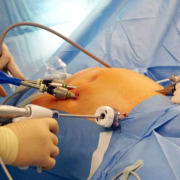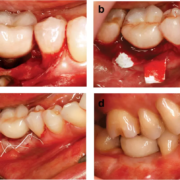USA: Aerobic exercise alone or resistance plus aerobic exercise, but not resistance exercise alone, improved composite cardiovascular disease (CVD) risk profile in adults with obesity or overweight compared with the control, a recent study published in the European Heart Journal has revealed.
Approximately one in three deaths in the U.S. is caused by cardiovascular disease, according to the U.S. Centers for Disease Control and Prevention. A robust body of evidence shows aerobic exercise can reduce risks, especially for people who are overweight or obese. However, few studies have compared results with resistance exercise known as strength or weight training or with workout regimens that are half aerobic and half resistance. Researchers at Iowa State University led one of the longest and largest supervised exercise trials to help fill this gap.
Their results indicate that splitting the recommended amount of physical activity between aerobic and resistance exercise reduces cardiovascular disease risks as much as aerobic-only regimens. Resistance exercise on its own for the same amount of time did not provide the same heart health benefits when compared to the control group.
“If you’re bored with aerobic exercise and want variety or you have joint pain that makes running long distances difficult, our study shows you can replace half of your aerobic workout with strength training to get the same cardiovascular benefits. The combined workout also offers some other unique health benefits, like improving your muscles,” says Duck-chul Lee, lead author and professor of kinesiology at Iowa State.
Performing a certain number of sets and repetitions with weight machines, free weights, elastic bands or your own body weight through push-ups or lunges, all fall under resistance exercise.
“One of the most common reasons why people don’t exercise is because they have limited time. The combined exercise with both cardio and strength training we’re suggesting is not more time consuming,” Lee underscores.
Co-authors from Iowa State include Angelique Brellenthin, associate professor of kinesiology; Lorraine Lanningham-Foster,department chair and associate professor of food science and human and nutrition; Marian Kohut, the Barbara E. Forker Professor in kinesiology. Yehua Li, professor of statistics at the University of California Riverside, also contributed.
In the paper, they wrote: “These findings may help develop clinical and public health practices and recommendations for the approximately 2 billion adults with overweight or obesity worldwide who are at increased risk of [cardiovascular disease.]”
One of the longest, largest exercise trials
Four hundred and six participants between 35 and 70 years of age enrolled in the one-year randomized controlled exercise trial. All met the threshold for being overweight or obese with body mass indexes between 25-40 kg/m2 and had elevated blood pressure.
The researchers randomly assigned participants to one of four groups: no exercise, aerobic only, resistance only, or aerobic plus resistance. Those who were in one of the three exercise groups worked out under supervision for one hour, three times a week for one year.
Every participant in one of the exercise groups received a tailored workout routine based on their individual fitness levels, health conditions and progression. Those assigned to resistance training were given a certain number of sets, repetitions and weights for weight-lifting machines. With aerobic exercises, participants wore a heart rate monitor and inserted a unique exercise program key into a treadmill or stationary bike. Sensing the participant’s heart rate, the machine automatically adjusted the speed and grade to match the prescribed intensity.
Researchers collected physical activity and diet data outside the lab, as well. All participants, including those in the no exercise group, wore pedometers to measure daily steps. They met every three months with registered dietitians at Iowa State for “Dietary Approaches to Stop Hypertension” education, which is promoted by the National Institutes of Health. On three random days per month, participants were asked to record what they had consumed in the last 24 hours with an online dietary assessment tool developed by the U.S. National Cancer Institute.
At the start of the year-long clinical trial, six months in and at the end, the researchers measured each participant’s systolic blood pressure, low-density lipoprotein cholesterol, fasting glucose and body fat percentage. All are well-established cardiovascular disease risk factors.
“Many previous studies only looked at one of these four factors, but it’s really multiple factors combined that increase cardiovascular disease risk,” explains Lee.
The researchers used a composite score to fairly quantify changes across all four factors since each uses a different unit of measurement. A lower composite score indicates less risk for developing cardiovascular disease.
Main findings
At the end of the year-long trial, the percentage of body fat in all three exercise groups had decreased significantly compared to the no-exercise control group. The authors write in the paper that “every -1% body fat reduction is associated with -3%, -4%, and -8% lower risks of developing [cardiovascular disease] risk factors of hypertension, hypercholesterolemia, and metabolic syndrome.”
However, taking all four cardiovascular disease risk factors into account, the aerobic and combined exercise groups had lower composite scores than the control group. The results were consistent across gender and age.
Secondary findings
For the 12-month study, those in the aerobic-only group continued to improve with the VO2max test, which is the maximum rate of oxygen consumption attainable during a maximal treadmill test. The resistance-only group stayed relatively flat. The inverse was true for the maximal bench and leg press tests for muscular strength; the resistance-only group continued to improve while the aerobic-only group did not.
However, the combination exercise group improved both aerobic fitness and muscular strength.
Finding the right dose
The authors say their findings support “physical activity guidelines recommending both resistance and aerobic exercise by the U.S., [World Health Organization] and European Society of Cardiology, specifically for individuals with obesity.” Currently, it’s at least 150 minutes each week of moderate intensity aerobic exercise and two sessions per week of resistance training.
“But these guidelines don’t specify how long those strength training sessions should be to get the health benefits,” says Lee.
With a newly awarded grant from the National Heart, Lung and Blood Institute, Lee wants to find “the right dose” of resistance exercise among adults who are overweight or obese. He plans to conduct another randomized controlled resistance exercise trial, this time with 240 participants. The study will compare results from 0-, 15-, 30- and 60-minute resistance sessions, twice per week for six months in a supervised exercise lab. Participants in all four groups also will be asked to do 30-minute sessions of moderate-intensity aerobic exercise, twice per week, per the physical activity guidelines.
During the second six-month phase, participants will receive a free health club membership and be asked to continue their assigned regimen, unsupervised. Lee explains this will help identify which dose of resistance exercise is both effective and feasible outside experimental trials.
Reference:
Duck-chul Lee, Angelique G Brellenthin, Lorraine M Lanningham-Foster, Marian L Kohut, Yehua Li, Aerobic, resistance, or combined exercise training and cardiovascular risk profile in overweight or obese adults: the CardioRACE trial, European Heart Journal, 2024;, ehad827,https://doi.org/10.1093/eurheartj/ehad827.




















